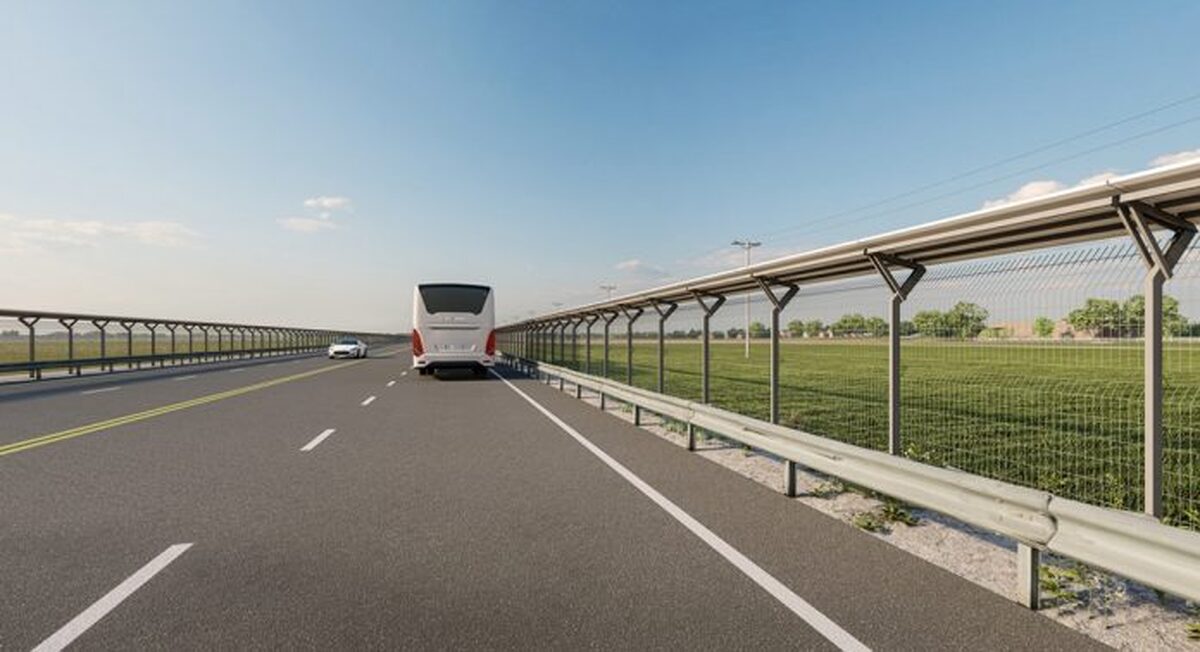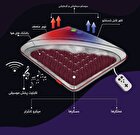Wireless Charging for Electric Vehicles Could Significantly Reduce CO2 Emissions

In the face of climate change, many governments are looking for viable solutions that can reduce CO2 emissions and slow the rise in temperatures that threatens our planet. In the transport sector, which accounted for 16.2% of emissions worldwide in 2016 and nearly 30% of all emissions in the US, switching from internal combustion engines (ICE) to electric vehicles (EVs) offers a marked reduction in CO2 emissions, the Innovation News Network reported.
At ElectReon, our wireless charging solutions for EVs could reduce emissions even further. Early research indicates that an additional 25 million to 678 million tons of CO2 reductions annually, between now and 2030 could be made possible through Electric Road Systems (ERS) that charge EVs wirelessly as they drive.
Existing reports indicate opportunities for CO2 reductions as a result of switching from ICE to EV powered vehicles. Our data assesses the potential CO2 reduction when utilising inductive (wireless) charging technologies for electric vehicles. Currently, the majority of charging solutions for EVs are stationary conductive (plug-in).
By forecasting passenger and commercial electric vehicle fleet growth in the next decade, as well conducting research on key carbon emitting factors, we have been able to estimate the amount of carbon reductions we can expect on average each year between now and 2030 as a result of wide scale implementation and utilisation of ElectReon’s dynamic and static wireless charging to service the projected EV market growth.
The estimation of between 25 million tons and 678 million tons of annual CO2 emissions reduction is based on a variety of low-end, mid range, and high-end global fleet size projections, sustainability policy implementation, technical capacities for vehicles, and carbon emitting measurements. The higher end range figure is a reflection of emissions reductions that we can expect as we move closer to 2030, as more EVs join our global fleet. This range is not absolute, but is indicative of the sustainable impact potential of using ElectReon’s wireless charging technology.
Several key data points offer valuable insight into the opportunities presented by an alternative charging strategy; wireless dynamic EV charging. In estimating this range, data was taken from several key transportation, energy, and vehicle factors that would lessen the impact of CO2 emissions, including battery size reduction for vehicles; less conductive charging equipment manufacturing; utilisation of existing infrastructure for charging vehicles in motion; shifting the generation, storage, and delivery of electricity from fossil fuel resources to that of renewables; and lessening the impact on the national electric grid through more spatial and dispersed charging practices. Each of these factors offer critical perspectives on the complexity of EVs as a key player in the bid to fight climate change.
A main point of conversation and contention around EVs is the battery. Optimisation of EV batteries is a focal point, as well as battery management solutions, such as battery swapping, mobile EV charging points, and emergency charging kits for EVs that have run out of range. For larger vehicles such as e-trucks and e-buses, additional, large batteries are required.
EVs that are powered by wireless electric charging require smaller batteries than those reliant on plug-in charging and have extended range. Fleets reliant on plug-in charging will schedule operations around charging requirements and, to ensure range limitation does not impede operational behaviour, will use larger or multiple batteries to power their EVs. Fleet operators require each EV to have enough battery power to leave the charging point, usually a terminal or depot, transport goods or serve passengers, and return to charge. Fleets that charge overnight will put the battery through a full charging cycle, charging a flat battery from 0% to 100%. Top-up charging maintains the battery’s State of Charge (SoC) from between ~30% to ~80%, keeping the battery performing better for longer.
Wireless charging solutions enable the strategic deployment of Electric Roads along fleet-frequented routes, keeping a battery’s SoC in a healthy state, and removing the requirement for additional or large batteries to meet range requirements. Reducing battery sizes and preserving battery life is a more sustainable practice than continual reliance on battery production and consumption. Reports place CO2 emissions from BEV manufacturing at 56-494 kg of CO2 emissions caused per each KwH of battery production. Carbon emissions associated with the production of an EV can be 38-74% more than the production of a petrol or diesel vehicle, so strategies to extend battery life, minimise manufacturing emissions, and better manage finite resources are critical.
ElectReon’s technology has demonstrated the opportunity for battery sizes to be reduced by up to 90%. In Tel Aviv, a 42 kWh super-capacitor replaced a 450 kWh battery that powered a 12 metre e-bus and in Sweden, a 40 ton e-truck was equipped with a 210 kWh capacity battery and was able to deliver extended range with help of the wireless Electric Road System.
Building electric vehicle supply equipment (EVSE)—plug-in charging solutions—for BEV fleets can be expensive. New land is often required to house the charging facilities, which require electric grid upgrades, installation and maintenance of multiple charging points, and building adaptations to safely house fleets whilst they charge overnight. Wireless charging technology is installed just beneath the top layer of tarmac or asphalt, enabling any area of road to become a charging zone, and helping communities electrify transport quicker by removing cost barriers associated with plug-in charging infrastructure.
ElectReon’s Wireless Electric Road Systems and wireless charging stations can charge multiple vehicles at any given time; a single system can charge up to 60 e-buses or 60 e-taxis. International benchmarks suggest that one plug-in charger is required for every 10 to 15 EVs and wireless charging can help meet these benchmarks by providing charging opportunities for EVs along their route. For commercial fleets, data published by the World Resources Initiative estimated a vehicle charger ratio of 6:1 to support fast-charging operations. ElectReon’s ERS can also assist commercial fleets in continuing daily operations post shift to electric.
Increased EVs on roads places pressure on the electric grid to supply power and manage demand during peak charging times. Wireless charging technology can protect existing grid infrastructure and defend against energy demand peaks by distributing transport energy demand; sporadically top-up charging EVs throughout an entire 24-hour period. Fewer high-capacity grid connections are therefore required for end-of-shift or overnight charging, reducing demand pressures that are often presented when entire fleets plug-in to fully charge overnight in any given locale.
Dynamic charging, whereby an EV charges as its driving, means that energy consumption is shifted from peaking overnight to small, frequent, and manageable charging sessions throughout the day. Electric Road Systems can be installed anywhere; traffic lights, motorway slip roads, high streets, public stations, along motorways, and even at toll roads. These Electric Roads can charge any vehicle equipped with authorised receivers that initiate charging when the EV passes over the charging zone.
For fleet operators, naturally occurring breaks during a driver’s shift present ideal opportunities to top-up charge an EV. E-taxis may charge whilst queuing to collect passengers at an airport, for example. In the case of buses, 100 e-buses can use wireless charging technology to charge whilst they are stationary at bus terminals, garages, and bus stations located inside city centres. These charging zones enable the buses’ batteries to top-up charge at natural breaks in their operations. This charging strategy permits a reduction in battery capacity and grid connection requirements. As charging is spread across the day, energy demand for charging the fleet can be managed across a 24-hour period, meaning that grid connections can be reduced by 66% on average. For example, a 6 MW connection would normally be required if a 100 e-bus fleet were relying on conductive (wired) overnight charging at their depot to fully charge their batteries, and with wireless top-up charging, this can be reduced to 2 MW.
The electric grid also has its own carbon footprint that must be taken into consideration. For example, the national US weighted average carbon dioxide marginal emission rate for delivered electricity in 2019 was 1,562.4 lbs CO2 per MWh, a figure which accounts for losses during transmission and distribution. Electrification of transportation in the US is expected to require a doubling of US generation capacity by 2050, and yet the power grid infrastructure in the US is limited at supporting 24 million EVs until 2028. This number of EVs falls short of the number required to replace ICE vehicles in an effort to successfully combat road transport emissions.
Introduction of renewable energy sources that supply power to Electric Road Systems directly on-site, can divert energy consumption away from fossil fuel sources and towards decentralised, greener solutions. Additionally, if Electric Roads were to be installed everywhere at scale, national electric grids could be continuously alleviated of the growing pressure put on them by the switch to electric. Electric Roads can help reduce the requirement placed on electric grids to store and transfer energy for use during peak charging periods.
Electric Road Systems offer the highest possible CO2 emission reduction of all available technologies, 67% more than fuel-cell technology. Additional CO2 reductions are possible with the installation of localised renewable energy sources alongside Electric Roads, such as solar panels or traffic wind turbines.
A study into private EV charging found that an EV with a battery capacity ranging from 16 to 100 kWh requires 22 kWh of energy per month, on average, from public fast charging stations. In the same study, data showed that en-route fast charging made up just 3% of charging sessions, presenting an opportunity for wireless charging to supplement existing charging behaviours and immediately reduce CO2 emissions. In the case of commercial vehicles, which require on average 114,858 kWh of electricity consumption per year to operate, en-route wireless charging stations powered by renewable energy sources could provide energy for 3% of a commercial EV’s journey, delivering 3,446 kWh of energy directly from renewable sources instead of the electric grid.
Every 1 kWh produced by a solar PV system equates to a direct reduction in the carbon emissions of 1 kWh of electricity produced by power utilities. In the US, estimations suggest that 1 kWh of electricity produced from fossil fuel sources accounts for anywhere between 330 to 475 kg of carbon emissions.
1km of electric solar fence can provide around 1 MW of power or more, which, combined with wireless charging infrastructure, has the potential to supply power to around 1,300 e-buses in a 24-hour period. Taking into consideration seasonal variation and assuming an average speed of 50mph, the energy from the solar fence solutions could power the e-buses independently, without input required from the central power grid. With solar and wind power, comes the question of energy storage. Storing energy is also costly in terms of CO2 emissions; storage in the US results in emissions of 104 to 407 kg of emissions per MWh of delivered energy. Until national electric grids are powered by renewable energy sources, all electric vehicles will rely on fossil fuels for energy. Electric Road Systems can work with localised renewable energy sources, offering a location to both generate and utilise power with an optimally temporally synchronised approach, independently from the grid.
Much of the data presented in this report indicates great potential for wireless charging to support existing EV charging solutions, alleviate electric grid pressures, save battery resources, and cut emissions across the EV sector. These opportunities are grounded in the unique operational nature of wireless charging; roads and zones can be installed anywhere, powered by renewable energy, and all at a fraction of the total cost and resource usage, compared to that required by plug-in charging stations.
Reducing annual CO2 emissions by up to 678 million tons can have a considerable impact upon the climate, it’s more than 1% of our global annual emissions. Continuing along existing trends that promise a growth in EV sales and green cities is simply not enough; to make a difference we must take up opportunities to accelerate EV ownership uptake and optimise EV charging strategies.
4155/v
























